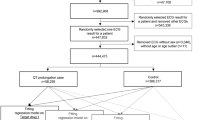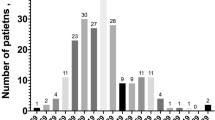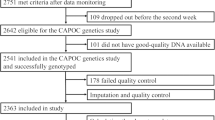Abstract
Moxifloxacin (MX) is an 8-methoxyquinolone antimicrobial drug, which is often used as a positive control in thorough QT (TQT) studies. In the present study we established the population pharmacokinetics model of MX and the relationship of MX concentrations with the QT and various corrected QT (QTc) intervals, and compared the results with other ethnicities. The MX data used for modeling were obtained from a published TQT interval prolongation study of antofloxacin with MX as the positive control. In this four-period crossover study, 24 adult Chinese healthy volunteers received either 200 or 400 mg of oral antofloxacin once daily, 400 mg of MX, or a placebo. Population concentration-effect models were used to investigate the relationship between MX concentrations and QT interval prolongation, baseline-adjusted QTc (ΔQTc), or ΔQTc adjusted with time-matched placebo corrections (ΔΔQTc). The influencing factors of MX PK and the concentration-QTc relationship were determined through covariate screening. Simulation studies were conducted in R2.30 by using the final model with the estimated population mean and intra-individual and inter-individual variability. The estimated pharmacokinetic parameters and the estimated slope of the MX concentration-QT/ΔQTc/ΔΔQTc relationship were described using models and were compared to results for other ethnicities from the literature. We showed that the population pharmacokinetic parameter estimates for total plasma clearance (CL/F), the volume of distribution of central compartment (Vc/F), the distributional clearance in plasma (Q), the volume of distribution of peripheral compartment (Vp/F), and the absorption rate constant (Ka) were 8.22 L/h, 104 L, 3.98 L/h, 37.7 L, and 1.81 1/h, respectively. There was no significant covariate included in the final model. QT interval prolongation of MX estimates ranging from 9.77 to 12.91 ms at the mean average maximum concentration of MX (4.36 μg/mL) and a mean slope ranging from 2.33 to 2.96 ms per μg/mL. In conclusion, no ethnic differences were observed for the MX pharmacokinetic parameters and QT interval prolongation.
Similar content being viewed by others
Log in or create a free account to read this content
Gain free access to this article, as well as selected content from this journal and more on nature.com
or
References
Food and Drug Administration, HHS . International Conference on Harmonisation; guidance on E14 Clinical Evaluation of QT/QTc Interval Prolongation and Proarrhythmic Potential for Non-Antiarrhythmic Drugs; availability. Notice. Fed Regist 2005; 70: 61134–5.
fda.gov [homepage on the Internet]. E14 implementation working group: ICH E14 guideline: the clinical evaluation of QT/QTc interval prolongation and proarrhythmic potential for non-antiarrhythmic drugs questions & answers (R1). [updated 2016 Mar 3; cited 2017 Jun 23]. Available from: https://www.fda.gov/Drugs/GuidanceComplianceRegulatoryInformation/Guidances/ucm323656.htm
Song S, Matsushima N, Lee J, Mendell J . Linear mixed-effects model of QTc prolongation for olmesartan medoxomil. J Clin Pharmacol 2016; 56: 96–100.
Vandemeulebroecke M, Lembcke J, Wiesinger H, Sittner W, Lindemann S . Assessment of QT(c)-prolonging potential of BX471 in healthy volunteers. A 'thorough QT study' following ICH E14 using various QT(c) correction methods. Br J Clin Pharmacol 2009; 68: 435–46.
Sullivan JT, Woodruff M, Lettieri J, Agarwal V, Krol GJ, Leese PT, et al. Pharmacokinetics of a once-daily oral dose of moxifloxacin (Bay 12-8039), a new enantiomerically pure 8-methoxy quinolone. Antimicrob Agents Chemother 1999; 43: 2793–7.
Moise PA, Birmingham MC, Schentag JJ . Pharmacokinetics and metabolism of moxifloxacin. Drugs Today (Barc) 2000; 36: 229–44.
Tanaka T YK, Orii Y, Tsuboi T, Kawano K, Stass H, Tateisi T . Interethnic difference in the pharmacokinetics of a novel quinolone antibiotic, BAY 12-8039 (moxifloxiacin) and estimation of its clinical dose. Jpn J Clin Pharmacol Ther 1999; 30: 231–2.
Hasunuma T, Tohkin M, Kaniwa N, Jang IJ, Yimin C, Kaneko M, et al. Absence of ethnic differences in the pharmacokinetics of moxifloxacin, simvastatin, and meloxicam among three East Asian populations and Caucasians. Br J Clin Pharmacol 2016; 81: 1078–90.
Morganroth J, Wang Y, Thorn M, Kumagai Y, Harris S, Stockbridge N, et al. Moxifloxacin-induced QTc interval prolongations in healthy male Japanese and Caucasian volunteers: a direct comparison in a thorough QT study. Br J Clin Pharmacol 2015; 80: 446–59.
Choi HK, Jung JA, Fujita T, Amano H, Ghim JL, Lee DH, et al. Population pharmacokinetic-pharmacodynamic analysis to compare the effect of moxifloxacin on QT interval prolongation between healthy Korean and Japanese subjects. Clin Ther 2016; 38: 2610–21.
Shah RR . Drug-induced QT interval prolongation: does ethnicity of the thorough QT study population matter? Br J Clin Pharmacol 2013; 75: 347–58.
Lv Y, Hou F, Gao L, Cui H, Wang J, Zhang B, et al. Effects of Antofloxacin on QT/QTc interval and heart rate in healthy subjects. Proceedings of the 10th Chinese Pharmaceutical Congress of Pharmacology; 2010 Aug; Tianjin, China.
Li YF, Wang K, Yin F, He YC, Huang JH, Zheng QS . Dose findings of antofloxacin hydrochloride for treating bacterial infections in an early clinical trial using PK-PD parameters in healthy volunteers. Acta Pharmacol Sin 2012; 33: 1424–30.
Schulte S, Ackermann T, Bertram N, Sauerbruch T, Paar WD . Determination of the newer quinolones levofloxacin and moxifloxacin in plasma by high-performance liquid chromatography with fluorescence detection. J Chromatogr Sci 2006; 44: 205–8.
Mason JW . Florian JA Jr, Garnett CE, Moon TE, Selness DS, Spaulding RR. Pharmacokinetics and pharmacodynamics of three moxifloxacin dosage forms: implications for blinding in active-controlled cardiac repolarization studies. J Clin Pharmacol 2010; 50: 1249–59.
Ito F, Ohno Y, Toyoshi S, Kaito D, Koumei Y, Endo J, et al. Pharmacokinetics of consecutive oral moxifloxacin (400 mg/day) in patients with respiratory tract infection. Ther Adv Respir Dis 2016; 10: 34–42.
Peloquin CA, Hadad DJ, Molino LP, Palaci M, Boom WH, Dietze R, et al. Population pharmacokinetics of levofloxacin, gatifloxacin, and moxifloxacin in adults with pulmonary tuberculosis. Antimicrob Agents Chemother 2008; 52: 852–7.
Zvada SP, Denti P, Sirgel FA, Chigutsa E, Hatherill M, Charalambous S, et al. Moxifloxacin population pharmacokinetics and model-based comparison of efficacy between moxifloxacin and ofloxacin in African patients. Antimicrob Agents Chemother 2014; 58: 503–10.
Simon N, Sampol E, Albanese J, Martin C, Arvis P, Urien S, et al. Population pharmacokinetics of moxifloxacin in plasma and bronchial secretions in patients with severe bronchopneumonia. Clin Pharmacol Ther 2003; 74: 353–63.
Florian JA, Tornoe CW, Brundage R, Parekh A, Garnett CE . Population pharmacokinetic and concentration--QTc models for moxifloxacin: pooled analysis of 20 thorough QT studies. J Clin Pharmacol 2011; 51: 1152–62.
Yan LK, Zhang J, Ng MJ, Dang Q . Statistical characteristics of moxifloxacin-induced QTc effect. J Biopharm Stat 2010; 20: 497–507.
Poordad F, Zeldin G, Harris SI, Ke J, Xu L, Mayers D, et al. Absence of effect of telbivudine on cardiac repolarization: results of a thorough QT/QTc study in healthy participants. J Clin Pharmacol 2009; 49: 1436–46.
Acknowledgements
This study was supported by the Scientific Research Fund for Young Teachers (ZYX-QNQD-001), the Shanghai Education Commission (ZY3-CCCX-3-1001), the Special Project for the Priority Academic Program Development of Shanghai Higher Education Institutions (ZYX-CXYJ-014), and the Shanghai University of Traditional Chinese Medicine (2014YSN17).
Author information
Authors and Affiliations
Corresponding authors
Rights and permissions
About this article
Cite this article
Xu, Fy., Huang, Jh., He, Yc. et al. Population pharmacokinetics of moxifloxacin and its concentration–QT interval relationship modeling in Chinese healthy volunteers. Acta Pharmacol Sin 38, 1580–1588 (2017). https://doi.org/10.1038/aps.2017.76
Received:
Accepted:
Published:
Issue date:
DOI: https://doi.org/10.1038/aps.2017.76
Keywords
This article is cited by
-
Concentration–response modeling of ECG data from early-phase clinical studies to assess QT prolongation risk of contezolid (MRX-I), an oxazolidinone antibacterial agent
Journal of Pharmacokinetics and Pharmacodynamics (2019)



